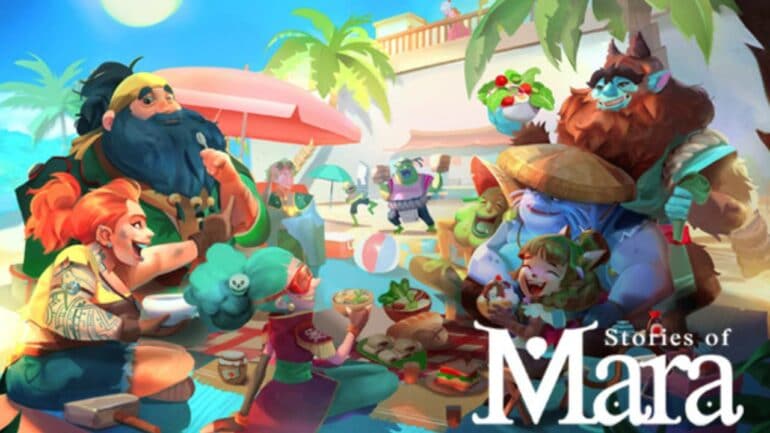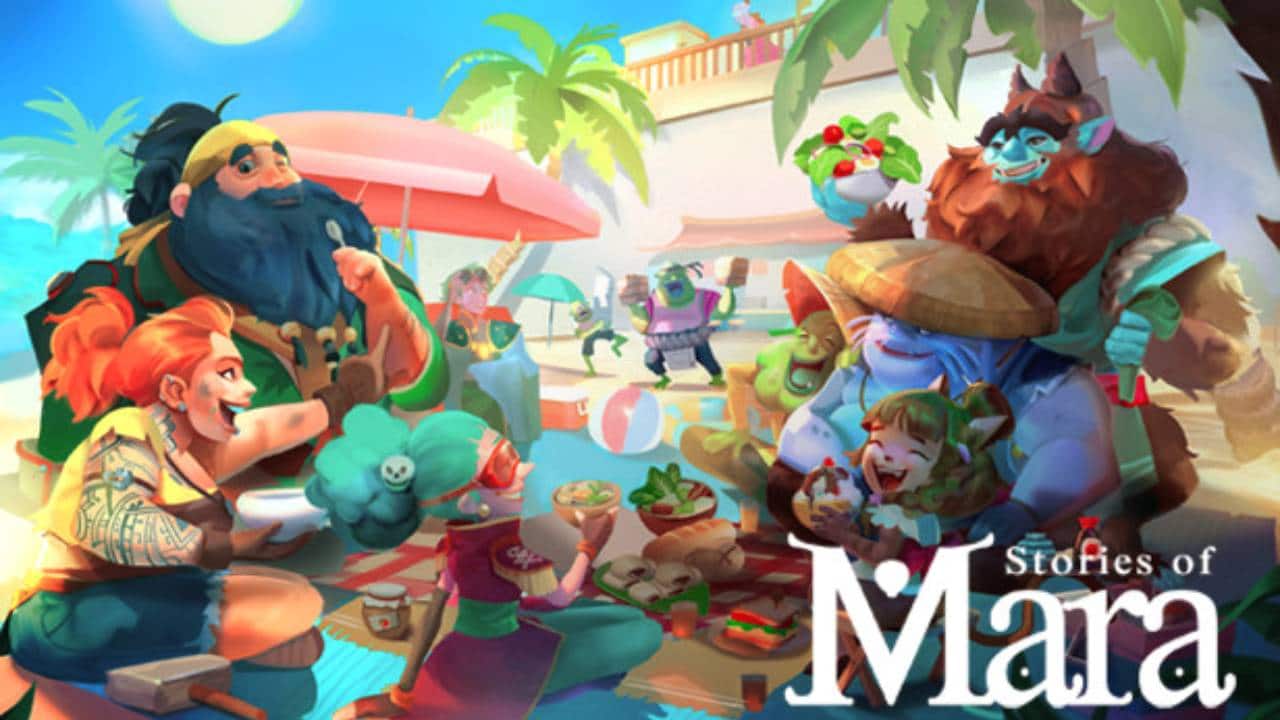I’ve always enjoyed visual novels ever since I discovered Ace Attorney back in the early 2010s. So, it’s brought me a lot of joy to see the genre grow in popularity over the last few years. The depth of stories that can be told due to the nature of the genre is incredible. However, if not written well, the narratives can become confusing for the player. Unfortunately, such is the case in Stories of Mara, a slice-of-life-visual novel developed by Spanish studio, Chibig.

“I can say with the utmost certainty that to enjoy this you should really play through its prequel.”
Stories of Mara is a sequel to the 2020 adventure game, Summer in Mara. Set in the tropical archipelago of Qalis, you play as the town’s blacksmith Akaji. You must go on a hunt around the islands for Summer in Mara’s protagonist, Koa, who has gone missing. While Akaji continues her search, she’s also tasked with completing tasks for the other island inhabitants. Additionally, she is also embarking on a journey of self-discovery to try to figure out who she is and what she wants out of her own life.
I hadn’t played Summer in Mara before playing through Stories of Mara. So, I can say with the utmost certainty that to enjoy Stories of Mara you should really play through its prequel. This game provides very little context for its world, the characters and for certain events which I assume took place in Summer in Mara. It got to the point that I had to do a fair bit of googling to understand the relationships between characters and why their dynamic was written the way it was.

The most glaring example of this was that the game didn’t tell me who Koa was and why I should care about her disappearance. I had to find out through my own research that she was the protagonist of the previous game. From the offset, the story wastes very little time getting to the point. However, as aforementioned, not knowing who Koa was and why the disappearance was important made it difficult for me as a player to be motivated to follow along.
“The art in Stories of Mara is absolutely stunning.”
Dialogue is one of the most important parts of a visual novel and for the most part, I found Stories of Mara’s engaging. Throughout much of Stories of Mara, I could feel the emotions that the developers intended. I say for the most part because the game isn’t perfect. I found that there was some redundant dialogue that didn’t serve a purpose in advancing the story.
We as players understand that Akaji and the supporting cast are polite characters through the tone of their dialogue. Therefore, extra thank-yous and yes pleases are entirely unnecessary. One of the most entertaining parts about the writing though was Akaji’s inner monologue. It injected some humour into the story and allowed me as a player to connect with her.

On a more positive note, the art in the game is absolutely stunning. I felt it perfectly captured the island feel of Qalis. The character designs are fun and despite not understanding why not everyone is a human or a cat-like creature, they fit in well with the background art. The different sprites can perfectly capture the emotion of the scene, perhaps even better than the dialogue itself could. I found myself lingering on certain parts of the game so I could take in every detail on the screen. There is a huge amount of diversity in designs amongst the various characters, with no two characters looking the same.
“While it isn’t the best visual novel that I’ve ever played, Stories of Mara is still a sweet one.”
Unfortunately, despite Stories of Mara visual successes, I found there to be some odd technical decisions that are unusual for the genre. For example, Stories of Mara has an autosave feature. While this is common in adventure games, it is not common for visual novels. The majority of visual novels allow you to save at any point. They’ll also have multiple save files available so that the player can try out different branches of the story – or if you’re like me, backtrack when you realise you’ve chosen the wrong thing.
Another curious design decision was that there didn’t appear to be any way to turn off the typing sound during dialogue. Frankly, I feel that this is a must for any visual novel. It can quickly become grating and ruin your immersion. Lastly, there was no option to play in windowed mode. While this is certainly a personal preference, it was surprising to find the option absent. All of these odd design decisions made me wonder if perhaps this was Chibig’s first foray into visual novels. At the very least, it certainly feels that way.

While it isn’t the best visual novel that I’ve ever played, Stories of Mara is still a sweet one. Its short length and fantastic art make it a breezy way to pass a couple of hours. It definitely requires prior knowledge of the world to be fully appreciated. However, if you’ve played, and enjoyed, the prequel I’d recommend picking this up so you can get to know the characters that inhabit Koa’s world more closely. It’s also worth noting that Stories of Mara is completely free over on Steam.







